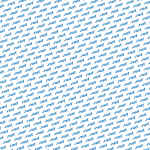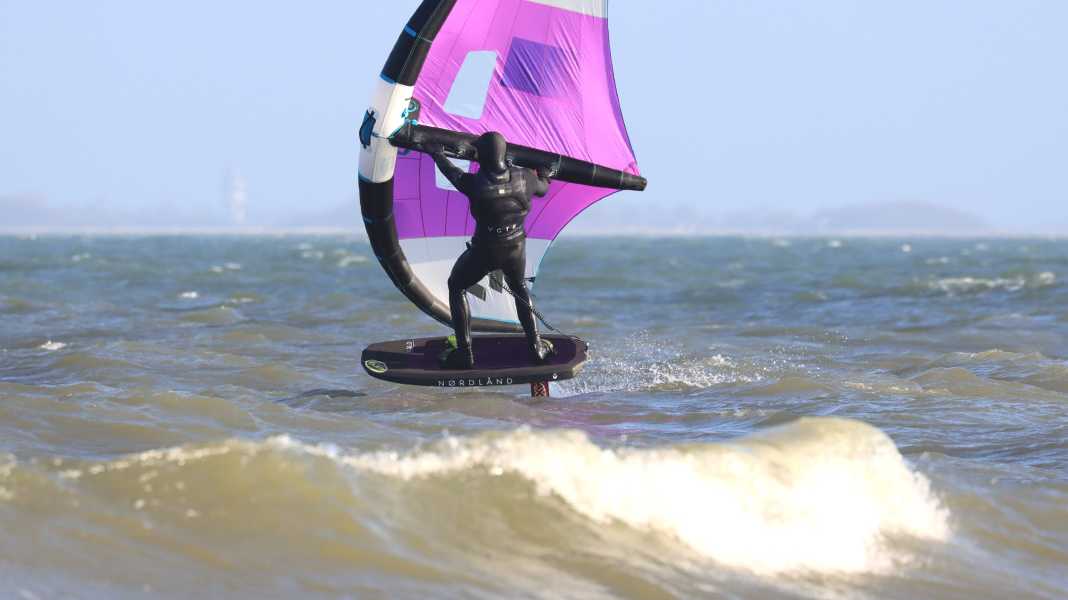
The Duotone Unit and Unit D/Lab model variants complement the Slick model ( HERE there's a test) in the direction of freeride and wave/downwind applications. We tested the differences between the Unit and Unit D/Lab and whether it makes sense to pay 600 euros more for a weight advantage of 300 grams.
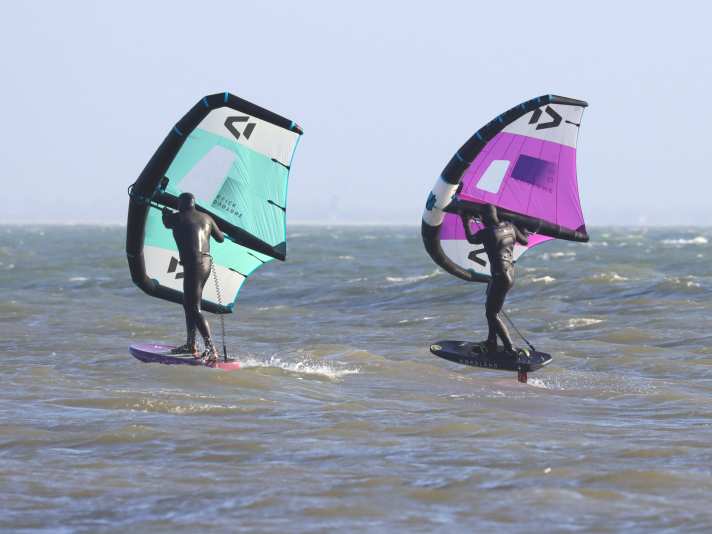
Duotone Unit vs. Unit D/Lab - different material mixes
Both versions of the model - Unit and Unit D/Lab - are similar in terms of outline, profile and basic features, but differ in terms of the materials used. In general, the new model has a span that is almost 20 centimetres longer than the Duotone Slick, for example, which should allow it to drift better when riding waves and also benefit freeride suitability and light wind performance. Compared to the previous model, the front tube of the Unit is significantly more segmented, which should give the wing a stiffer basic structure. For the lighter Unit D/Lab, on the other hand, Duotone relies on the very stiff Aluula material, which is also used in the Ocean Rodeo Glide ( HERE there's a test). This means that the Unit D/Lab in our 5.0 square metre test size is around 300 grams lighter than the "normal" Unit, but you have to fork out a whopping 600 euros more at the shop counter.
We explain the exact differences between the two models, including in comparison to the Slick model, in this clip on our YouTube channel .
The grip system of the Unit and Unit D/Lab is also new: instead of handles, the manufacturer now uses mini booms, which allow the hands to be moved sideways and also mean a very direct connection to the wing.
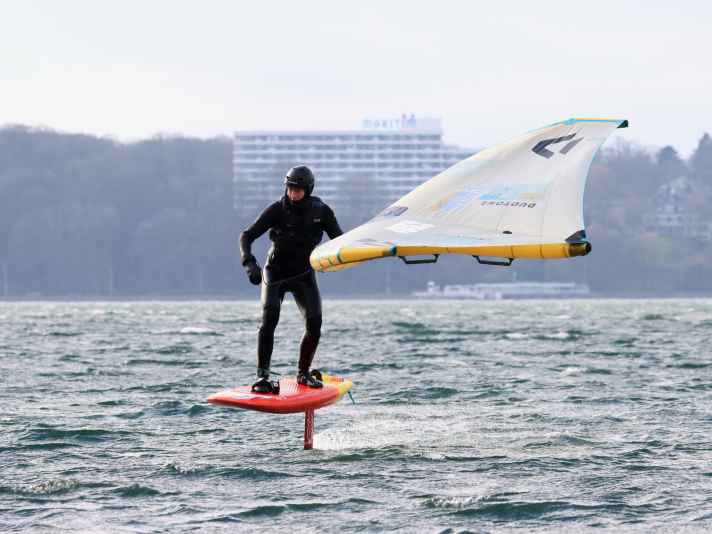
On the water:
Regardless of which version of the new Unit you choose, the strengths of the concept quickly become clear: the Wing is perfectly balanced in the hand and can be pumped up really well - and it charges noticeably better than its stablemate Slick, for example. In direct comparison, the Unit D/Lab seems a touch lighter, and the lower weight also has a positive effect when pumping. To be honest, however, the normal Unit also plays in a very high league here. The bottom line is that the D/Lab does not allow you to take off earlier, but at best with slightly less effort when pumping.
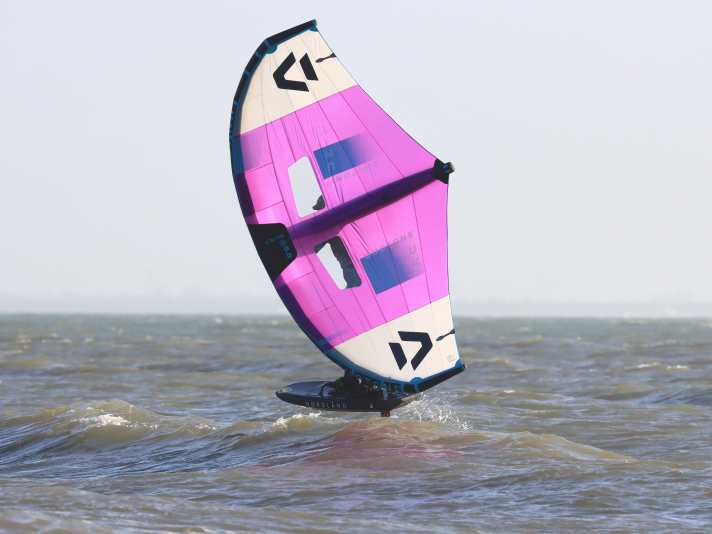
The new handle system offers many advantages: Contact with the wing is as direct as possible, control impulses in manoeuvres are passed on 1:1. It is also possible to adjust the grip position with millimetre precision, which means you can always hold the pressure point directly between your hands - the result is very even tension distribution and the best freeride suitability. The Unit and Unit D/Lab are both tightly tuned wings and remain controllable for an above-average amount of time in gusts. In light winds, we would recommend reducing the inflation pressure by 0.5-1.0 psi, as this makes the wings a little more elastic and they load up even better when pumping - especially if light riders (<75 kilos) are surfing with them.
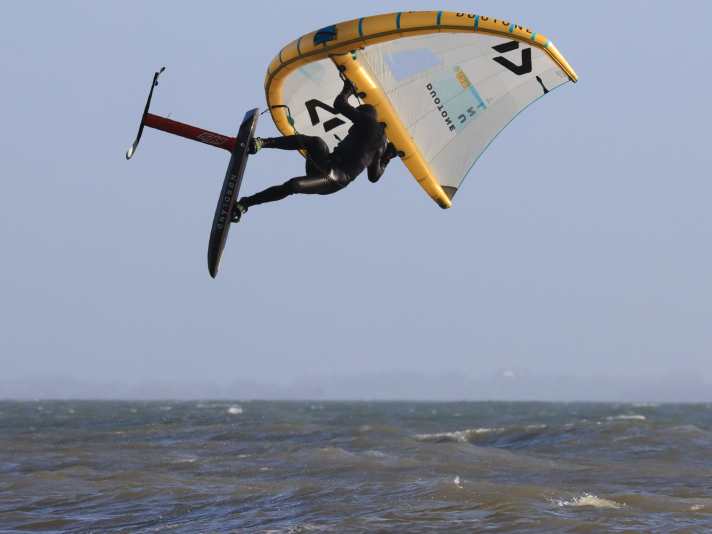
The Unit and Unit D/Lab also have a lot to offer ambitious wingsurfers. Both variants offer plenty of power and lift for jumps and can also handle rotations with ease. As expected, the D/Lab is a touch more manageable. On the wave, the Unit drifts stoically behind and, with a pleasingly small amount of life of its own, ensures that you can surf small swells and surf waves in a relaxed manner. Only when riding downwind do you realise in a direct comparison of the two models that the D/Lab floats along even more easily.
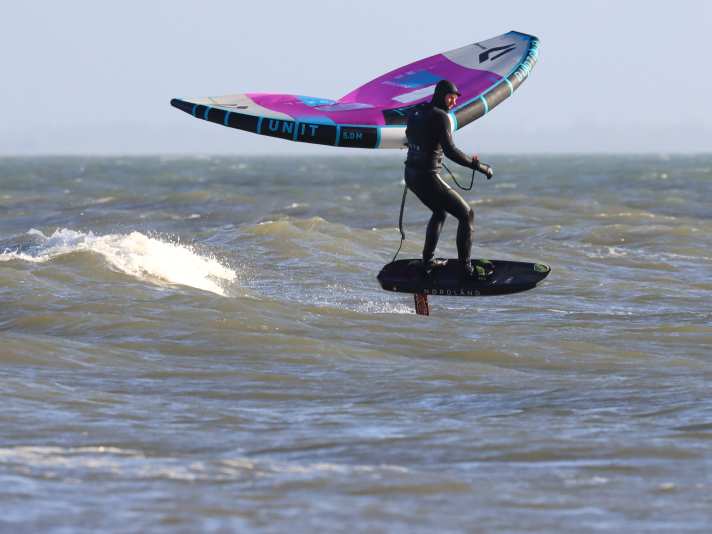
Conclusion:
Both versions of the Unit have fully convinced us and are suitable as tight, powerful and handy wings for a wide target group from wingfoil beginners and freeriders to wave foilers. The D/Lab is even more manoeuvrable and drifts even more weightlessly when riding waves - whether this is worth the extra 600 euros is ultimately up to the rider to decide. The freestyle suitability of the Unit and Unit D/Lab is also not bad, but overall the stable brother Slick offers a little more potential for freestyle rotations due to its smaller span.
Direct wing contact, power, neutrality, handling
Price D/Lab; no leash included in the scope of delivery
